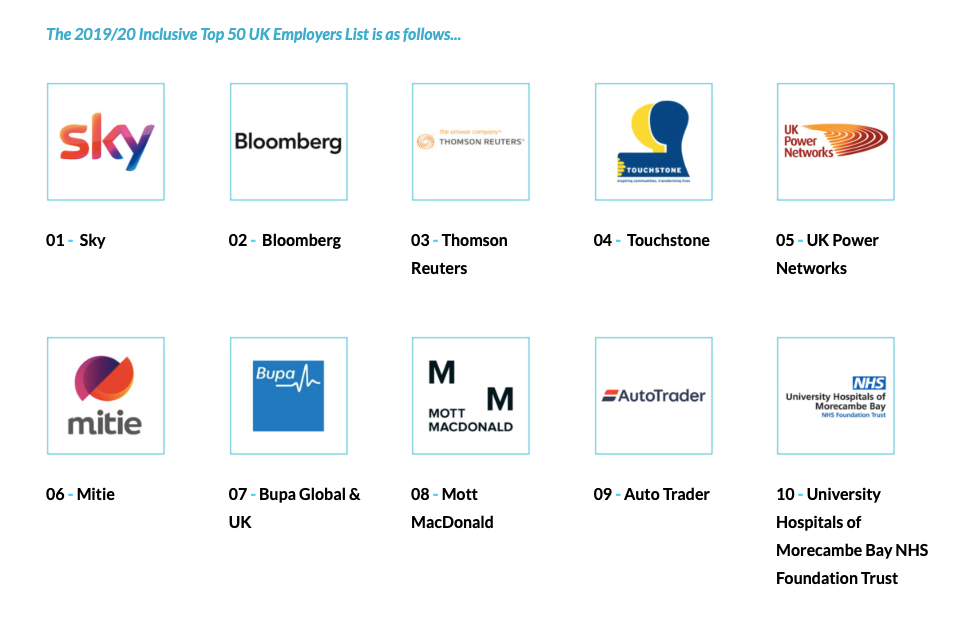‘The business case for Diversity and Inclusion is stronger than ever. Taking a closer look at Diversity winners reveals what can drive real progress’
from the ‘Diversity Wins’ Report by McKinsey 2020
Despite candidate preferences and growing evidence of the business benefits of investing in Diversity and Inclusion, many companies still only consider its importance in relation to compliance.
Recently recruitment has seen the most radical changes to employee expectations in decades. The disruption to working norms during the pandemic coupled today’s employee job market enables employees to take a stand over their needs. They want not just flexibility and a better work-life balance but employers who share their values.
Another factor forcing change is the effect of millennial generations preferences; according to Gallup, Millenials ‘already make up the largest generational workforce’ and nearly half of millennials surveyed in a study by the IPR ‘believe that diversity and inclusion are important criteria when looking for a potential employer.’
Developing a reputation for being a truly diverse and inclusive company won’t just improve your ability to attract employees; consumers are also seeking companies whose corporate social responsibility initiatives make a difference to disadvantaged groups.
By developing effective D&I practices, companies differentiate themselves from companies whose Corporate Social Responsibility is hollow and not backed by action. Companies who show they take social responsibility seriously increase the positive perception of their brand, helping them to earn attention in an increasingly crowded market. According to a 2016 report by Aflac, 61% of investors say that "ethical corporate behavior,’ increases their confidence in a company as it ‘reduces investment risk."
The link between diversity and increased profits doesn’t only stem from customer perceptions. It makes sense that increased diversity results in better decision making as ‘diverse groups consider a broader range of ideas and produce more possible solutions.’ (Read more about the effects of diversity and productivity in this report by the Network for Business Sustainability).

Equality, Diversity, Inclusion: What does a top performing company look like?
The following case studies show strategies from companies leading in their diversity and inclusivity. Included are details of their award-winning D&I practices and the effects these have had on their businesses.
Case study 1: Thomson Reuters
Ranking 3rd in the UK Top 50 most inclusive employer list, Thomson Reuters delivers the intelligence, technology and expertise the world’s professional markets rely on.
They continue to improve how they recruit a talented, diverse workforce by working in partnership with leaders and employees and creating diverse interview panels for all roles.
Training is at the heart of Thomson Reuters with an incredible 2,756,924 hours offered to employees in 2017. All employees complete a D&I e-Learning course on joining the organization, which introduces key concepts such as the iceberg model and micro-inequities to give them suggestions on how to get involved and take action.
They offer unconscious bias training to enable managers to identify their own blind spots plus offer a course on how to be an inclusive leader. Advanced leaders are also offered a course on diversity driving innovation. Additional training is available at any time through their learning portal on topics such as Developing a Global Mindset and Cultural Fluency, Gender, Race and Ethnicity, Generational Difference, Disability and LGBT Topics.
In addition to training they offer gender specific programmes such as Emerging Women in Leadership, the Lead’her’ship Programme For Women in Technology and the Leading in Growth Markets Programme for Women. They also launched a Black Talent Taskforce formed of senior executives from across the business to build a pipeline of black talent.
Their global Corporate Responsibility & Inclusion programme offers all permanent employees two paid days a year to volunteer for causes they are passionate about.
Employee-led Global Volunteer Networks also run regular host mentoring sessions, career insight visits and work readiness sessions for young people in London’s Tower Hamlets, Hackney and Southwark. 50,000 young people have also received education in technology skills through Thomason Reuters’ partnership with Apps for Good.

Image from Inclusive Companies UK 2019/2020 Top 50
CASE STUDY 2: Bloomberg
Bloomberg, the global business, and finance news leader, ranked second in the 2019/20 Inclusive Top 50 UK Employers List, in recognition of its dedication to workplace diversity.
Chairman, Peter T. Grauer holds leaders accountable for driving change ‘in order to attract, retain and develop the best people around the world.’ By regularly reviewing their diversity plans, he ensures there is
‘an organization-wide focus on progress towards goals related to the recruitment, development and retention of diverse talent. Not just because it’s the right thing to do, but because it makes complete business sense. Strong, diverse teams help us succeed in a highly competitive global environment.’
Bloomberg offers a range of initiatives to support and retain a diverse workforce including talent reviews, mentorship programs, inclusive recruitment practices, manager training and business-led initiatives.
Bloomberg’s commitment to diversity extends beyond the confines of the organisation.
Bloomberg’s Gender-Equality Index (GEI) tracks the financial performance of companies committed to advancing women in the workplace globally through public disclosure of gender-related data.
Case study 3: Tendeka
Global completions service company Tendeka has fostered a culture in which both women and men are given equal opportunity to progress and flourish in their careers.
The business did not form a specific diversity plan or put formal quotas in place but focused on creating an environment ‘naturally conducive to gender diversity.’
This included the introduction of family-friendly working practices including flexible working conditions which benefit parents as well as career breaks and support during adoption processes.
In the space of a two-year period, the percentage of their female staff rose from 33% to 40%. Senior management positions occupied by women also increased from 28% to 50%. They add that, ‘In all cases, people were selected due to their skills and industry experience.’
Gillian King, Tendeka VP, says ‘Tendeka has always been very proud of our diverse workforce and believe this better reflects our customers, inspires creative thinking and leads to more balanced decision making. Creating more diverse role models is critical now as we try to attract new talent to drive the energy transition”
